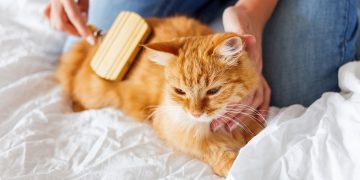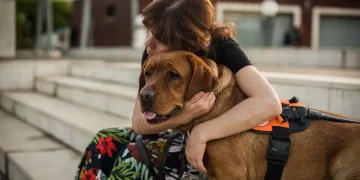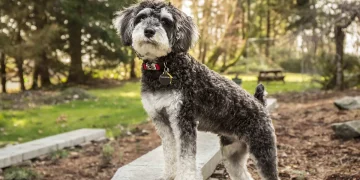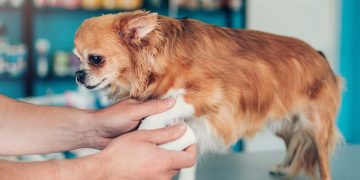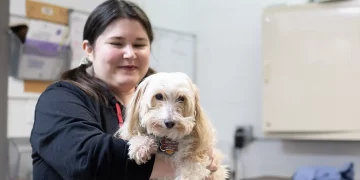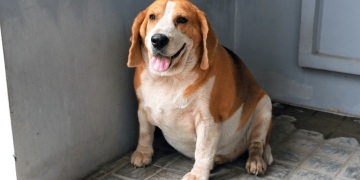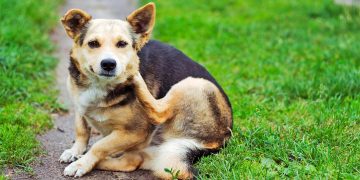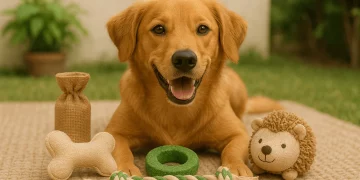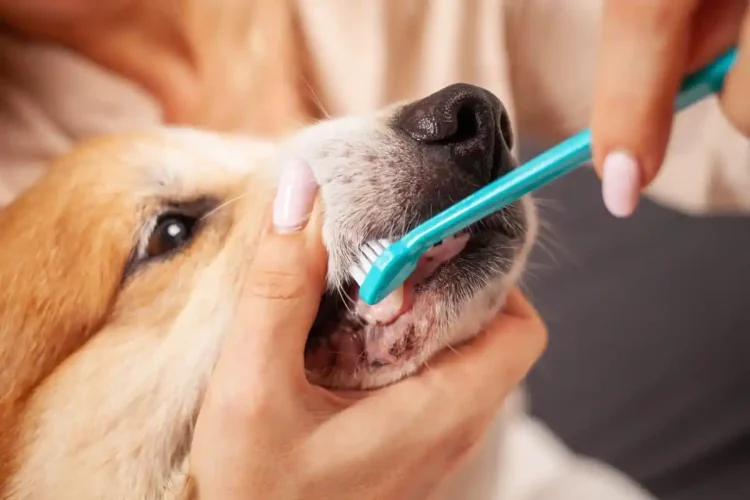Grooming Starts with Trust, Not Tools
For many new puppy owners, grooming is simply another task on the checklist: a matter of nail trims, baths, and brushing. But for a nervous puppy, grooming can feel like an overwhelming invasion of their personal space. Introduced incorrectly, the experience may lead to fear, resistance, or even aggression. Introduced the right way, however, grooming becomes a powerful bonding ritual—one that helps your dog stay healthy, relaxed, and emotionally connected to you.
The key to grooming a nervous puppy lies in patience, desensitization, and building a positive association with each step. Puppies aren’t born loving brushes, clippers, or nail grinders. They learn these things through experience, and your role is to make each experience feel safe and rewarding. This journey doesn’t happen overnight, but a thoughtful week-by-week strategy can help transform grooming from a source of fear into a moment of calm.
Why Early Grooming Matters More Than You Think
Early grooming isn’t just about keeping your puppy looking neat—it’s about future-proofing their behavior. Dogs that grow up without positive grooming experiences often develop anxiety around being handled. This fear doesn’t just apply to brushes and baths; it can show up during veterinary exams, ear cleanings, or even friendly petting from strangers.
Puppies go through a critical socialization window from about 3 to 14 weeks of age. During this time, they’re more adaptable and open to new experiences. If grooming is introduced gently and positively during this stage, it’s far more likely to be accepted as normal. Wait too long, and you may be undoing layers of stress and suspicion.
Starting grooming early also gives you the chance to get your puppy used to important health tasks: paw handling, teeth inspections, ear checks, and more. If you normalize touch and sound early, your puppy will be less likely to panic when the clippers buzz or the nail grinder hums.
Week-by-Week Desensitization Plan
Week 1: Touch Without Tools
The first week of grooming introduction isn’t about brushes or shampoos—it’s about your hands. Begin by petting your puppy in calm, quiet moments. Gently touch their paws, ears, mouth, and tail. Reward them with soft praise or small treats when they tolerate the touch. If they pull away, pause and try again later. You’re building trust, not forcing compliance.
Goal: Help your puppy associate gentle handling with safety and reward.
Week 2: Introduce Tools (Without Using Them)
Show your puppy grooming tools—brushes, combs, nail clippers, or electric trimmers—without using them. Let your puppy sniff them, reward with treats, and praise their curiosity. For electric tools, turn them on at a distance to get your puppy used to the sound without contact. This week is all about exposure without pressure.
Goal: Familiarize your puppy with grooming items as non-threatening objects.
Week 3: Simulated Grooming Motions
Begin using the brush lightly in slow, short strokes—just one or two passes, then praise and treat. Focus on areas your puppy likes being touched first, such as the chest or back. Don’t aim for a full brushing yet. With nail tools, practice holding a paw without clipping. Use a toothbrush to mimic tooth cleaning by rubbing it gently along the gums, even without paste.
Goal: Build tolerance to light grooming gestures and maintain a relaxed experience.
Week 4: Add Duration and Slight Pressure
Increase brushing time gradually—two to three minutes if your puppy allows. Begin touching sensitive areas like behind the ears or near the tail. Try trimming just the very tip of one nail or introducing a wet cloth to simulate a bath. Keep the pace slow and reassuring, and use high-value rewards.
Goal: Strengthen confidence while gently expanding grooming tolerance.
Week 5–6: Full Grooming Session in Short Segments
Now it’s time to string grooming elements together: a brushing session, a quick nail check, a dab of toothpaste. Use short sessions with breaks in between. If your puppy starts to fidget or whine, stop before frustration sets in. End every grooming session with something your puppy loves—playtime, a meal, or a walk.
Goal: Create a routine where grooming feels predictable and rewarding.
Positive Association Strategies That Actually Work
The heart of desensitization is making sure every grooming interaction is linked with something positive. This might include:
- Using treats strategically: Offer a treat each time your puppy lets you touch a sensitive area or tolerate a grooming tool.
- Incorporating toys: Let your puppy chew a favorite toy during brushing sessions to reduce anxiety.
- Building a grooming station: Use a non-slip mat or towel to create a consistent space for grooming, helping your puppy know what to expect.
- Pairing with calm sounds: Soft music or white noise can reduce startling sounds from grooming tools.
- Practicing after exercise: Puppies are more tolerant when they’ve burned off energy. A post-walk grooming session can feel soothing rather than invasive.
Avoid negative reinforcement like yelling, restraining forcefully, or brushing too hard. Any discomfort experienced early will be remembered later. Your goal is to prevent the development of grooming trauma.
How to Handle Resistance Without Creating Fear
Even with the best strategies, some puppies will resist. The important thing is to read the signs and respond with empathy. If your puppy pulls away, flinches, or tries to bite the brush, that’s not misbehavior—it’s communication. They’re saying, “I’m scared,” or “That doesn’t feel good.”
Here’s how to respond:
- Pause immediately: Don’t force through it. Forcing increases fear.
- Scale back: Try a gentler brush, less pressure, or shorter sessions.
- Pair with high-value rewards: Use extra-special treats for breakthrough moments.
- Practice when calm: Avoid grooming during high-energy times or when your puppy is overstimulated.
If a specific area is always a problem—like paws or belly—focus only on that one zone for a few days using light touches and rewards. Eventually, your puppy will accept it as part of the experience.

The Role of Routine: Why Consistency Builds Confidence
Puppies thrive on routine. By grooming at the same time of day, in the same place, and with the same approach, you build predictability. A nervous puppy gains confidence not through novelty, but through repetition. When they know what’s coming, they’re less likely to panic.
Set a schedule for:
- Brushing: 3–4 times per week depending on coat length
- Nail inspection: Once per week (clipping as needed)
- Ear checks: Once per week
- Teeth cleaning: 2–3 times per week
Even a quick 2-minute brushing session daily helps normalize the process. Keep sessions short and always end on a positive note—never with a struggle.
When to Involve a Professional
For puppies with severe fear or trauma responses, a professional groomer or behaviorist can help. Some puppies may benefit from a few low-stress visits to a groomer just to socialize, smell the equipment, or get brushed by a stranger. Make sure to choose a groomer who is experienced with young or fearful dogs and uses positive reinforcement methods.
Veterinarians can also rule out any physical reasons for grooming intolerance, such as skin irritation, joint pain, or neurological issues. A puppy that yelps or snaps when touched in one spot may be experiencing genuine discomfort.
Preparing for a Lifetime of Comfortable Care
Everything you teach your puppy in their first few months sets the tone for how they’ll respond to care throughout their life. A dog who grows up with gentle, positive grooming experiences is more likely to accept nail trims, tolerate being bathed, and even enjoy brushing sessions as a form of affection.
Grooming isn’t just a chore—it’s an act of love. It’s a quiet, consistent reminder that you care for your dog not just when they’re energetic or playful, but when they’re still, vulnerable, and trusting you with their body.
Conclusion: Grooming the Relationship, Not Just the Coat
Introducing grooming to a nervous puppy is not about rushing or forcing. It’s about building a relationship based on touch, trust, and understanding. Through small, daily steps filled with praise, patience, and routine, you can help your puppy not only tolerate but truly enjoy being groomed.
In doing so, you’re not just shaping grooming behavior—you’re shaping a dog who feels safe in your hands for life.



